Dubrovnik’s Charming Water Fountains
Coming to Dubrovnik’s old town, you will see both locals and tourists stopping at its historical water fountains to refresh themselves and fill their bottles with ice-cold, fresh water.
What a great way to stay hydrated while saving your money and the environment at the same time. Seize the opportunity and take a couple of great pictures too, and you’ll get a perfect four in one package.
The History Of Dubrovnik's Public Water Supply System
Unlike today, until the beginning of the 15th century, water was sheer luxury in the city. Following the city’s population growth and the increase in industrial activity, the cisterns for collecting rainwater and the public wells that gathered purified seawater became inadequate to meet the city’s needs.
So, in 1436, the government decided to hire two south Italian masters Onofrio de la Cava and Andreucius de Bulbito to bring water to the city in thirst. They will accomplish the task in less than 1.5 years.
The result was a marvelous water supply system that will supply the city of Dubrovnik with spring water for almost 500 years, using gravity and a vertical drop of only 20 meters (65 ft). The water flowed along 11,700 m (7.27 mi) of a stone channel from the springs at Šumet (Rijeka dubrovačka) to the city’s water fountains.
Today, gravity has been replaced with electric water pumps, allowing water to come from a bigger spring, that of the river Ombla. The length of the aqueduct was reduced as well, and instead of its original length of 11.7 km (7.27 mi), thanks to a tunnel made through the hill of Srdj in the second half of the 20th century, today it’s a little bit less than 5 km long.
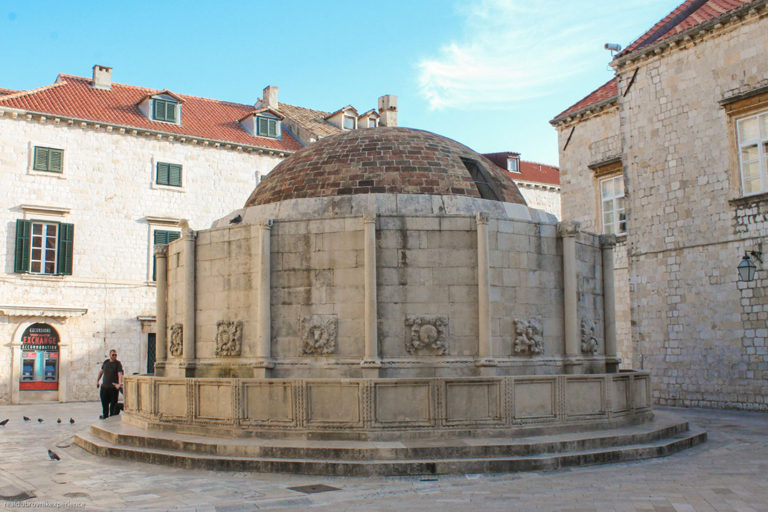
The big Onofrio’s water fountain, the old town of Dubrovnik
The Most Famous City Water Fountains
The big Onofrio’s fountain, the most famous of the city’s drinking fountains, is situated in a beautiful spacious square, just as you enter the old town through the Pile gate, and close to the main entrance to the city walls.
It was built in 1438 to mark the finish of the construction of the water supply system, and was named after its architect, the famous south Italian master from Naples Onofrio de la Cava, the author of the small Onofrio’s fountain too, situated at the other end of the old town’s main street Placa or Stradun.
The fountain is decorated with sixteen mascarons—carved stone grotesque faces with a water spout coming out of their mouth. On the fountain’s upper part there used to be sixteen statues representing different animals.
Today, a dog statue can still be seen, the only one that survived the great earthquake of 1667. The earthquake destroyed the fountain’s upper part (today a simple brick dome stands in its place), so, unfortunately, we can’t admire it in its original splendor.
In the past, the fountain was a lively place swarming with people looking to catch the latest news or gossips while filling their buckets with water or even washing their clothes. Yes, there was a basin next to the fountain where ladies could wash clothes and one for horses to drink water.
Today, you won’t see any horses in the city or, speaking of that, ladies washing their clothes at the fountain, and these two parts were removed quite some time ago. But still today, many people gather at and around the fountain looking for a patch of shade, a place to sit down and rest or refresh themselves, especially on hot summer days when the city swelters in heat.
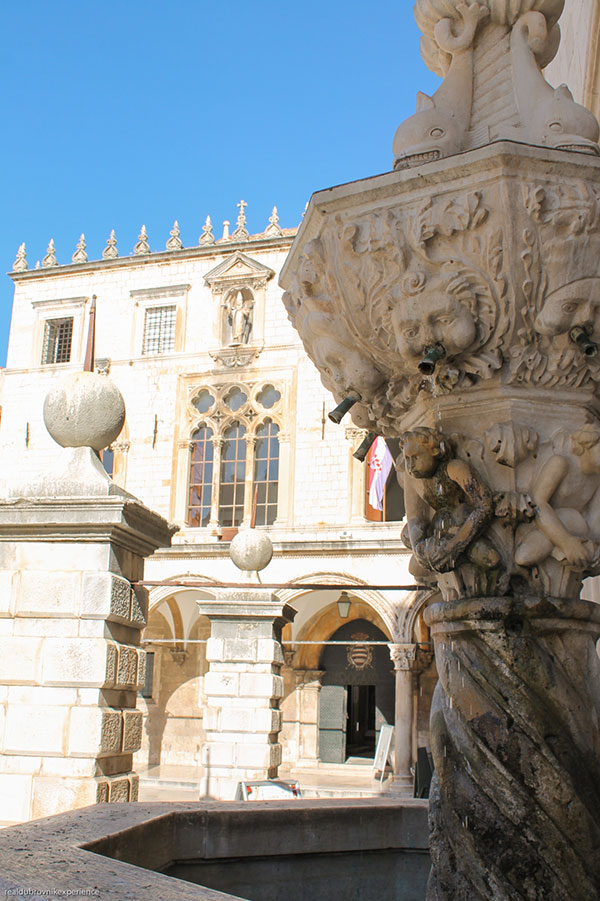
The small Onofrio’s fountain, in the main square of the old town of Dubrovnik
The small Onofrio’s fountain was designed by Onofrio de la Cava. It was built between 1440 and 1442, and is situated in the old town’s main square.
Just outside the Pile gate, you’ll find a spacious square called Brsalje, the usual spot from where start many sightseeing tours. Many people stop to admire a beautiful water fountain, which adorns the square, named Amerlingo’s fountain after its benefactor.
It was made by an established Croatian sculptor Ivan Rendić in 1900. It shows figures of a nymph and a satyr, reference to a scene from the pastoral drama “Dubravka”, written by the famous Croatian and Dubrovnik Baroque poet Ivan Gundulić (1589–1638). You can find his statue in the open market square in the old town of Dubrovnik.
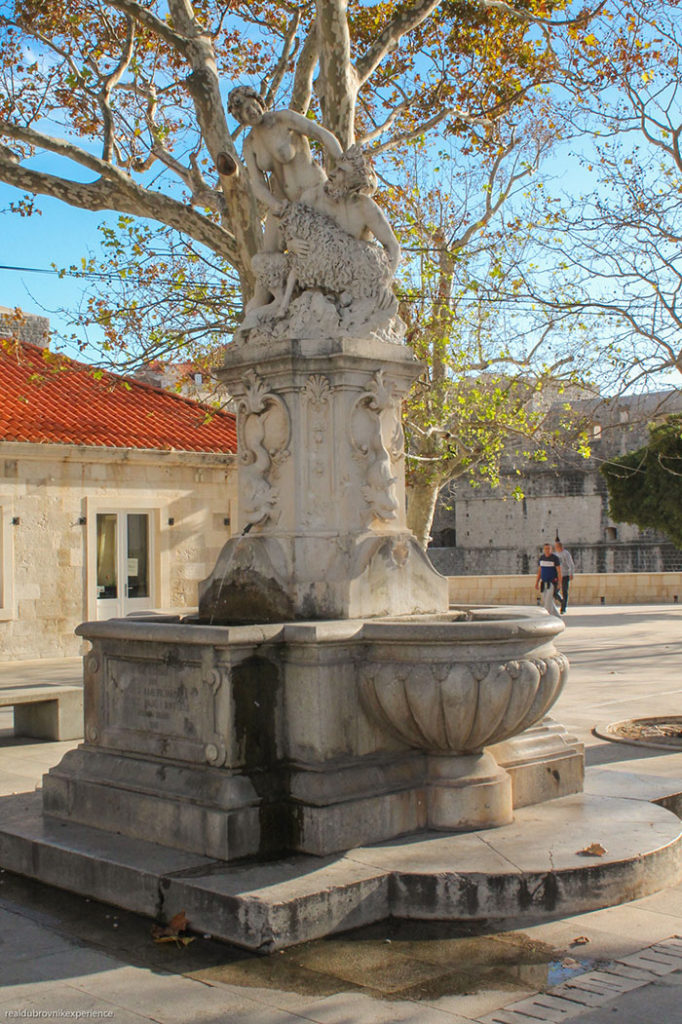
Amerlingo’s fountain in the Pile square, outside the old town of Dubrovnik
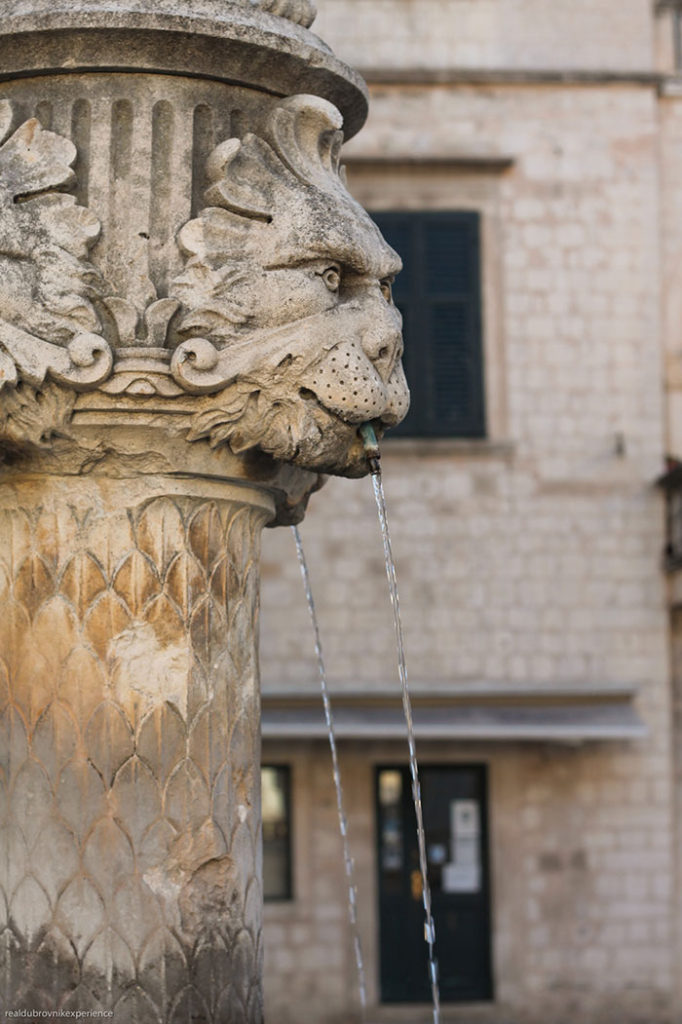
The water fountain at the open market in the old town, dating from 1902
Is Tap Water In Dubrovnik Safe To Drink?
According to Dubrovnik Public Water Company’s web page, the water in Dubrovnik is of excellent purity and its quality is being controlled and supervised on a daily basis. The potable spring water goes through a process of disinfection with Chlorine and Sodium hypochlorite. This process is strictly controlled and does not change the good and refreshing taste of spring water.
If you still decide to buy bottled water, please make sure to recycle. You will find recycling bins for plastic bottles at different points in and around the old town.
Ordering Water In Restaurants And Bars
It is rare to be served tap water in Dubrovnik’s restaurants, even if the tap water is safe to drink. It’s a part of the cost of eating out. You can order a small or large water bottle for your table. On the other hand, when you order a coffee in a café, it is customary to get a glass of tap water to go with it.
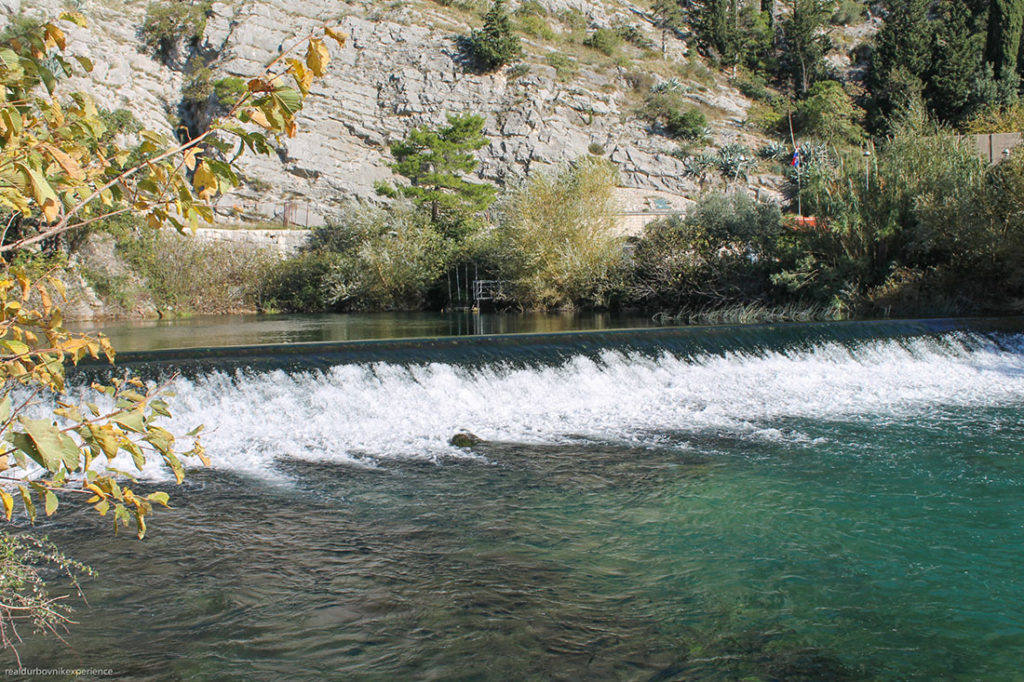
The river Ombla, Rijeka dubrovačka
Did You Know?
The river Ombla, which supplies the city of Dubrovnik with spring water, is a Croatian karst (limestone) phenomenon. It is considered one of the smallest rivers in the world with its length of only thirty meters. It springs out some 5km (3 mi) from Dubrovnik and, after only 30 m (98 ft), enters into the Adriatic Sea.
The Ombla river, with its head stream and its head stream’s tributaries, represents Europe’s longest karst system of sinking rivers (rivers that have the above and underground watercourses).
Karst is a type of landscape that is made up of limestone (chalk carbonate or calcium carbonate), which erodes as it interacts with water. It’s the reason why karst landscapes feature caves, sinkholes, and underground rivers.
